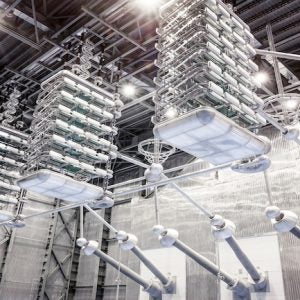Plans to make an island off the south coast of the UK totally sustainable in terms of energy, water and food by 2020 have been unveiled.
The plan to turn the Isle of Wight into an “eco-island” will involve the construction of wind, tidal, geothermal and solar power plants and is being led by local residents and businesses.
The project will be a major testing ground for clean energy technologies and the so-called “greenprint” could be replicated further afield, say the EcoIsland partners, which include major companies such as Toshiba, Cable & Wireless, IBM and energy utility SSE.
The initiative has already installed solar photovoltaic panels on 3500 social houses on the Isle of Wight as well as over 500 air-source heat pumps. It envisions the construction of enough renewable energy capacity to meet the island’s needs, linked by a smart grid and hydrogen energy storage system.
Other goals include the development of zero-emission transport options, zero landfill of waste and reducing energy bills for the island’s 142 000 residents.
David Green, founder and CEO of EcoIsland, said that this level of integration has not been done before. “We are staring into the face of the largest industrial revolution there has ever been as we switch from the depletion of our planet’s resources to a more balanced and harmonious relationship with the Earth,” said Green. “Communities like ours are pioneering the way.”
Cable & Wireless and its partner Silver Spring Networks have signed an agreement with EcoIsland to integrate the island’s planned renewable energy plants, power network and consumers into a smart grid. Alongside this, IBM will design and build a “smart energy cloud” that will gather data on energy usage on the island in order to help make consumers more energy efficient.
The project will also feature battery storage systems from Toshiba and an electrolysis plant that will generate hydrogen during times of excess electricity production.
The hydrogen will be used in a fleet of fuel cell vehicles, and could potentially be injected into the island’s natural gas network, according to Dr Simon Bourne, technology director at ITM Power.






